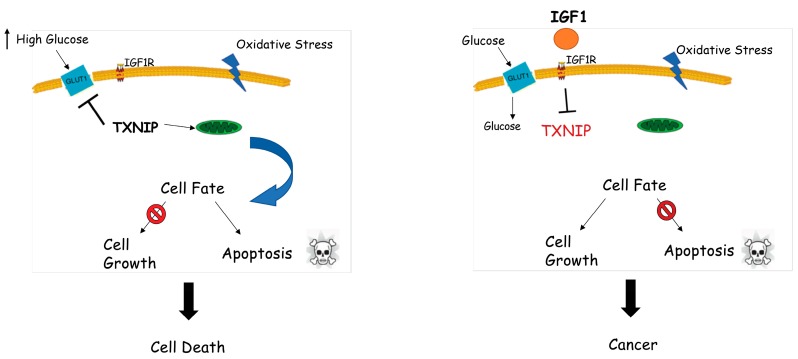Figure 5.
Regulation of thioredoxin-interacting protein (TXNIP) expression by IGF1. The processes of cell survival and homeostasis are tightly controlled by IGF1 action from early ontogenetic stages throughout adulthood. Left panel: normal physiological stress conditions, including starvation and oxidative and glucose stress, might lead to upregulation of TXNIP. Augmented TXNIP levels initiate apoptosis by interacting with thioredoxin and translocating to mitochondria. Cellular stress in the absence of IGF1 (e.g., Laron syndrome) may lead to cell death. Right panel: IGF1 significantly downregulates oxidative and glucose stress-induced TXNIP upregulation and controls glucose uptake in order to improve the energy balance of the cell. Cellular stress in the presence of IGF1 might lead to deregulated cell growth, including cancer.

